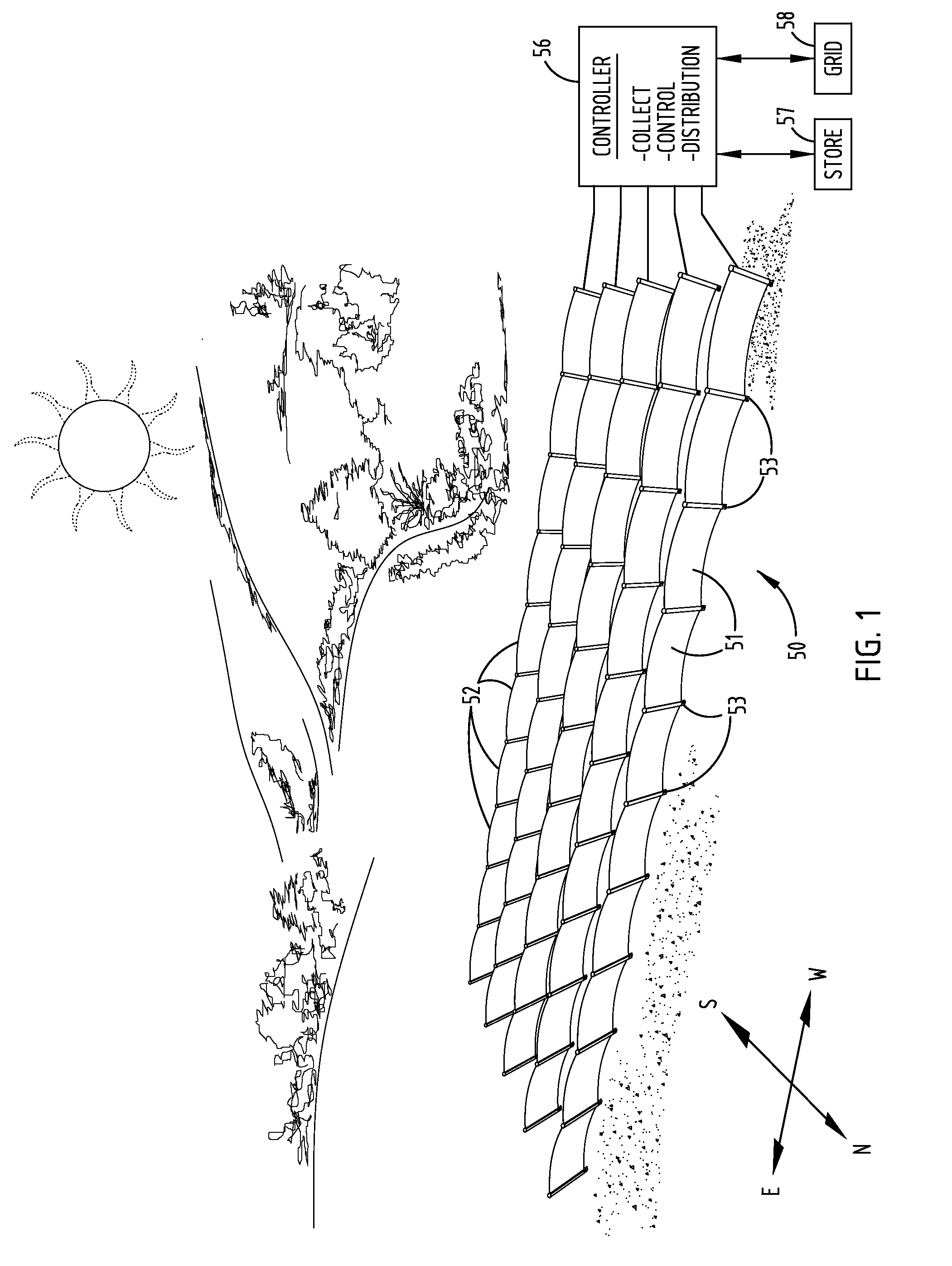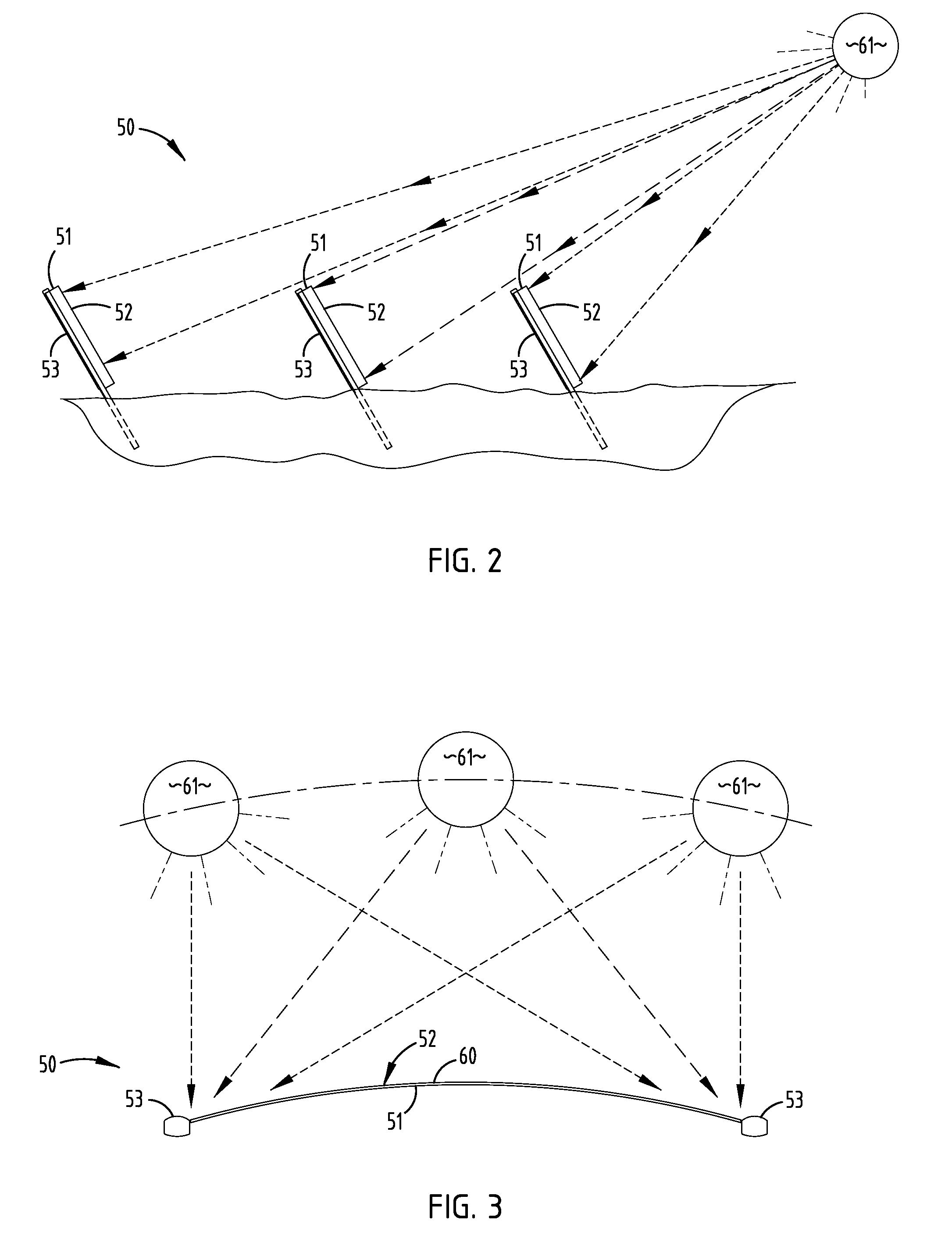Solar panel system with monocoque supporting structure
- Summary
- Abstract
- Description
- Claims
- Application Information
AI Technical Summary
Benefits of technology
Problems solved by technology
Method used
Image
Examples
Embodiment Construction
[0038]The present solar panel system includes a plurality of monocoques (also called a “monocoque support structure” or “solar-panel-supporting structure” or “curved frame” herein) each having a curved outer surface formed by thin sheet material, thin film solar panels with a plurality of solar cells on the outer surfaces, a plurality of posts (also called “anchoring system” or “upright monocoque supports” or “mounting standards” herein) configured to matably engage, hold, and anchor sides of the monocoques in a fence-like pattern, and an electrical circuit connecting the solar cells for electrical flow and power management. In a field installation, a post is positioned between each adjacent pair of monocoques, with the opposing sides of each post supporting the adjacent side edges of the pair of monocoques. The posts are extended into the ground at a desired angle and a specified spacing between posts to support the solar cells on the monocoques at an optimal solar collection angle...
PUM
 Login to View More
Login to View More Abstract
Description
Claims
Application Information
 Login to View More
Login to View More - R&D
- Intellectual Property
- Life Sciences
- Materials
- Tech Scout
- Unparalleled Data Quality
- Higher Quality Content
- 60% Fewer Hallucinations
Browse by: Latest US Patents, China's latest patents, Technical Efficacy Thesaurus, Application Domain, Technology Topic, Popular Technical Reports.
© 2025 PatSnap. All rights reserved.Legal|Privacy policy|Modern Slavery Act Transparency Statement|Sitemap|About US| Contact US: help@patsnap.com



